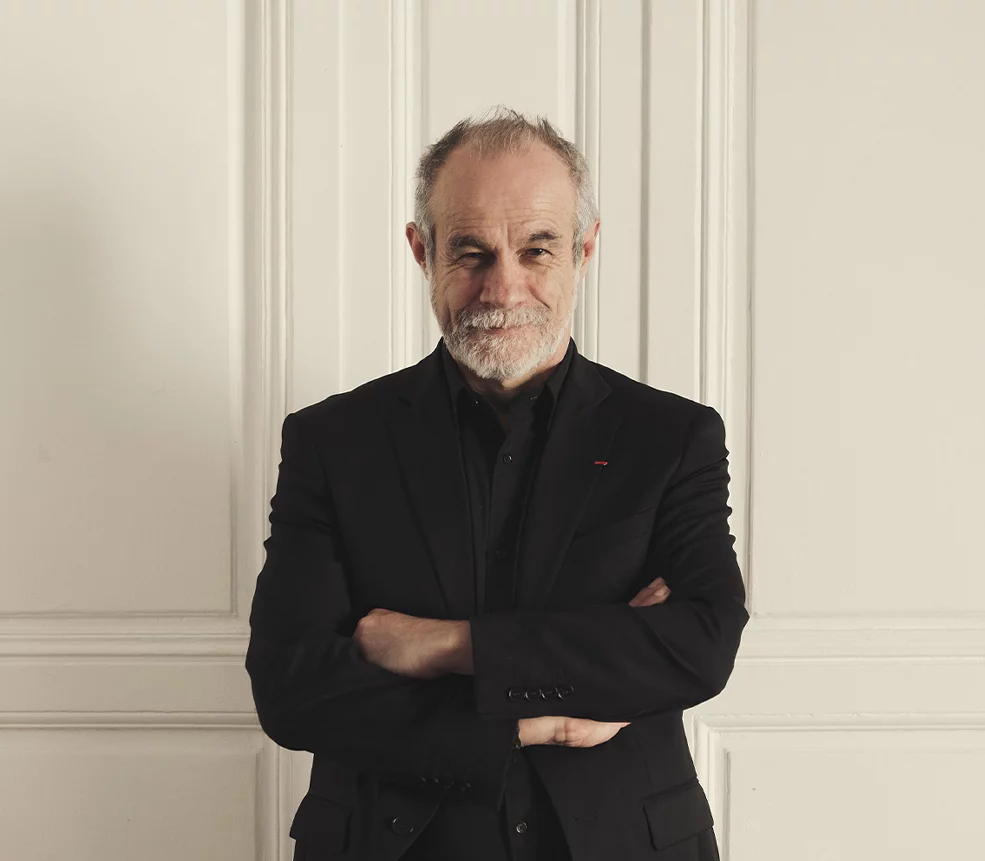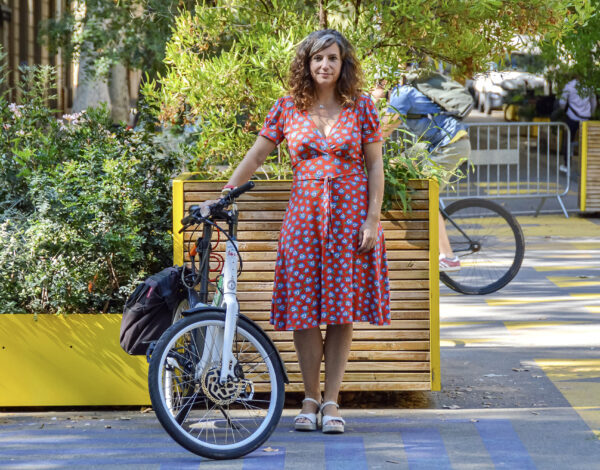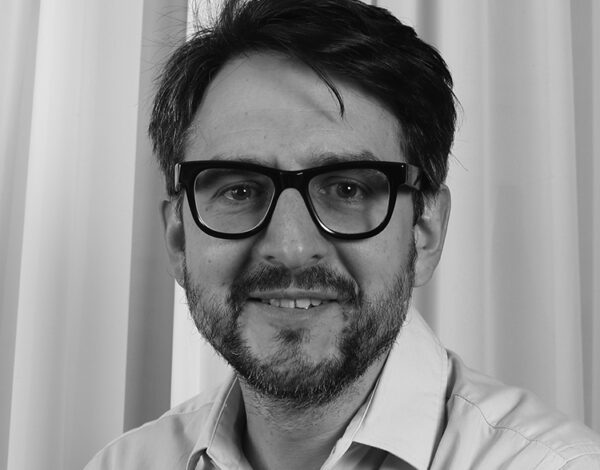The 15-minute city is a concept for sustainable, liveable and polycentric cities in which services and amenities for daily life can be easily reached with a 15-minute walk or bicycle ride. The concept is known worldwide, and more and more cities are planning for less car-centric cities to reduce ecological impact and maximize social benefits of living in human-centric cities. The concept was created by French Colombian professor Carlos Moreno. In this interview we look into the motives of creating the concept and why it’s a feasible concept for not only cities, but rural towns too.
You are cited as an urbanist – how did you become one?
My background is in mathematics and computer science, so I am not an urbanist in its traditional sense – I have not, for example, studied architecture. How I came to develop the concept is through my extensive work in developing original ideas for managing complex systems in different sectors.
I was very involved in promoting the use of digital technologies for example digital maps to explore our cities and I was at the forefront of developing smart cities. I was dedicated to deploying different technological systems for managing the complexity in cities, but at some point, I got convinced that technology has amazing leverage, but it’s not the target itself.
Understanding the complexity of cities, ecology, economy, sociology – was for me the spark for switching from a smart city focus to a more human and planet centric approach for our cities, to human, living cities. I started to focus my research and academic activities into this new model for designing more liveable cities with the focus on proximities, which really is embodied in the 15-minute city concept.
Because of your profile and expertise as a mathematician and computer scientist, can you reach different audiences and convince them of the benefits of designing cities of close proximity?
Indeed, many people think I am an architect, for example and I have won many awards and medals in the field of architecture and urban design, such as the 2019 Foresight Medal by the French Academy of Architecture. My real discipline is not really a discipline, it is complexity knowledge. The cities and their systems are one of the most complex systems created by humanity and so a multidisciplinary approach and understanding is necessary. My viewpoint, as a mathematician and computer scientist, is quite original: I can discuss urbanism, ecology, mathematics, high tech solutions and artificial intelligence, so I can also help to develop a multidisciplinary understanding of the complexity of cities. We need to have a very open mind for different visions and discussions on our cities.
The question of, for example, traffic circulation in cities, is not a question of technology or rules. During the smart city wave, different companies said it’s possible to manage traffic with smart technologies. You could, for example, implement smart red lights and with smart vehicles the flow of traffic could be managed. The question is not the use of technologies to manage the traffic in our cities – it’s not possible. The real question is to explore why we need to use the car, why we need to commute and why we need to take the same streets and boulevards causing congestion. And the car itself: why am I alone in my car, when there could be 4-5 places free in my car? To examine the behavior outside the technological implementations and to explore these daily attitudes is the key and for that my point of view is respected because of its multidisciplinary point of view.
Is the 15-minute city more of a social concept or an ecological concept? Or both? I guess it started from the main goal of reducing emissions, but how do you see the balance between these two?
This is a good question, and we can explore it by looking at it from a different angle: when I decided to embrace humanistic, social oriented urbanism I was inspired by the research work of Nobel prize winner in 2006, Mohammed Yunus. He wrote a wonderful book, A World of Three Zeros in which he said sustainability is the conversion of three topics: ecology, for preserving our natural resources and for switching to renewable energy and to preserve the livability of our planet. The second point is to develop a more dynamic economy for fostering local prosperity, against poverty and creating real added value, and the third point is about creating positive social impact, for an equitable city for fighting against racism, populism – for real social inclusivity. I embrace this concept and my research work is totally guided by this vision of sustainability: liveable city with positive ecology, viable city with local and dynamic economy, equitable city with social inclusivity. For one euro invested in a city, we need to invest at the same time in ecology, in the economy and in the social positive impact. We need permanence towards this triangle and it’s important that investors, policy makers, citizens, and different stakeholders are committed to it.
The urbanistic oriented viewpoint to the 15-minute city concept is based on happy proximity and with the goal to preserve the ecology with the strong reduction of CO2 emissions with priority for low carbon mobility, on foot, bike, and public transport. The three points are however entwined: the economy of local proximities, local commerce, local services for more viable cities – and at the same time a strong citizen commitment for inclusivity, to continuing to live better together in cities – and for promoting the mixed cities, for different social categories and the users of the city. The key for adopting the 15-minute city concept, ecology, economy and positive social impact, is actually all about mixed cities. Cities which have different social categories, access to different economic activities in local proximity, and priority for ecological behavior for strong reduction of CO2 emissions.

According to a recent study by YouGov data most Britons (62%) support their area becoming a 15 minute city. How should we talk to the rest 38% – is there misunderstanding or are the social benefits of a 15 minute city not clearly communicated?
Indeed – I was very happy when I saw the study in the UK and that 73% of Labour supporters and 53% of Conservative supporters were very positive about the impact of 15-minute cities’ proximity. However, it’s pretty crazy how the concept has been wrongly perceived by the conspiracy theorists who twist the concept into the same mix with climate denialism, anti-vaccination, and opposition to the digital ID system. It’s irrational as the 15-minute city is seen as a new “lock down” with compulsory decision limiting the movements of the citizens, with constraints for people to live in certain proximity and as crazy as it sounds, some claimed some kind of “passports” would be needed to access outside the zone. This tendency of the loud opposition and false facts by conspirationists is unfortunately seen around the globe. The Labour party, which has promoted the low traffic neighbourhoods, won the election in Oxfordshire, as well as several other local elections, where people have decided to vote for more liveable cities.
In reality the question is not whether people want the 15-minute city, the question is whether to continue to live with car dependency or not. To explore this question and for real understanding of the concept, we need less bubbles and real connections between people. The key point of the conspiracy attitude is the drive to preserve the role of private cars. In their view, a reduction for car dependency is a push to limit individual rights. This is totally false: this is not a question of individual rights, it’s a question of the collective destiny of humanity. If we want our planet to be liveable we need to fight against global warming and we need to switch from cars to different life and work styles and proximity is a powerful leverage for forming this lifestyle, without constraints. There is no aim to constrain people and limit people, but actually the opposite: to propose services close to where people live and work: cafes, shops, libraries, public services, places for children… It’s difficult to understand why anyone would resist this.
As seen in the study, the more urban areas, the more likely is the support for the concept. So how can people living in more rural areas/somewhat urban areas be convinced that the concept can be established successfully in their cities and towns? This is a very relevant question here in Finland too.
This is a very good question and an occasion to explain more the concept of proximity: the concept is there to address the close proximity of essential services in a compact zone in cities. The same philosophy is in the overall concept for proximities: the 15-minute city is relevant for compact city zones and the 30 minute territory in medium and low density zones, including rurality. Both concepts are in fact tied to the concept of happy proximity. The low and medium density, including rurality, is the case in a lot of towns and cities of Nordic countries, but also in France, where we have a lot of medium and low-density zones which have successfully deployed the “happy proximity” concept.
The question with 15-minute city and 30-minute territory is not the number of minutes. Sometimes people are almost obsessed with the number of minutes, and it doesn’t really matter if it is 15, 30, 17 or 35 minutes – that’s not the point of the model. The real question is how you could develop a deep, radical transformation of our lifestyle and work style for different densities. For that we have defined six essential functions: to live with the connection, whether it’s social & private housing, dense or medium dense city, to nature and access to green areas. Second essential function is to define the best conditions for working without long daily commutes, one of the main degradation factors for quality of life.
Third point is: how can we preserve local shops, local services, local food systems from urban and rural agriculture and for example local materials. The fourth point is the access to services and amenities which have a positive impact on physical and mental health, with a focus on preventive medical care. This is totally possible in the small towns for example through inventions such as having the health services visiting the location on a regular basis instead of people having to drive out for the services too far. The fifth point is culture: access to cultural activities, festivals, events – very important in rural towns and cities too. Through technology, we have for example a lot of possibilities for virtualizing events and having remote concerts for example. The sixth point is reimagining the use of our public spaces away from car-dependency. This is understandably difficult in rurality for example, because a lot of people need their cars for moving around. In this case we should develop a sharing economy, such as sharing cars and we could propose to small towns and ruralities new economic models supported by technologies, for example collective, shared mobility systems.
Instead of each small town having to try to invest in the same services for instance, we can think of a grid model for resources and create a shared territorial vision. Happy proximity can mean that you find the swimming hall in the next town, theater in your own rural town and the best sports center in the next.
We work with small public places, pockets for urban life, social seating and greenery. What is the meaning of such places and placemaking in general in the 15-minute city concept?
The global movement of placemaking is a powerful alliance and I am very close to the placemaking movement. It is integral in the 15-minute city concept because of its human centric approach: as Fred Kent (Project for Public Spaces, The Social Life Project) has said: if we create public spaces for cars, we have cars and if we create public spaces for people, we have people.
In the Placemaking Week in Pontevedra last September, where I gave a keynote speech, we could explore one great city which has succeeded to transform into a comfortable city center where the pedestrian is the king. This requires good quality public spaces: small pocket places, squares and much more where people can use the space in multiple ways. Public spaces direct very much how we use the city and I consider that placemaking contributes a lot in the transformation of our cities: for example, tactical urbanism and temporary transformations of public spaces totally opens places for imagining them together with citizens.
Placemaking movement’s key point is to integrate significant citizen participation which provokes people to commit to the city’s transformation: young people, children, families, immigrants, women… and this builds up the mindset for reimagining another world, that it is possible, another use of public space is possible – and I, as a citizen can be a committed actor to contribute for changing my square, my street – or just for changing the public space in front of my house. We can transform a place for just one day or a whole month – each such transformation is part of the actions for switching our mindset for better cities for people.
Finally, can you share some memorable moments from the recent past which made you see the 15 minute city concept in action.
Oh, there are many such moments. Recently I took part in a conference in Poland, in the museum of history of Warsaw. The room was totally full and when I finished delivering the keynote, someone from the public approached me. He told me that he works with the mayor of the Polish city of Pleszew, Arkadiusz Ptak who had downloaded my research three years ago. The mayor had since committed to delivering the concept of a 15 minute city and now, the small city of Pleszew, with about 16000 inhabitants is the first official 15 minute city in Poland. I was very touched, because I realized the impact of my research work in various cities and towns around the globe – this time, in a small town in rural Poland.
The interview was conducted by Päivi Raivio, urban designer and placemaker, co-founder of Parkly and RaivioBumann
Carlos Moreno is the guest of Urbanistica Podcast episode 331: 15 minute cities and placemaking. It was recorded during Placemaking Week 2023 in Pontevedra and hosted by Mustafa Sherif. Listen to the episode here.


